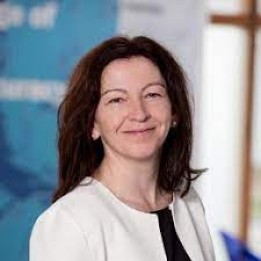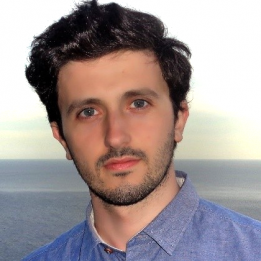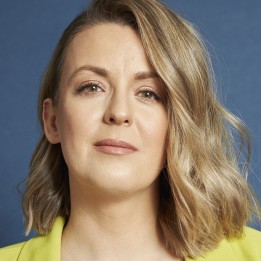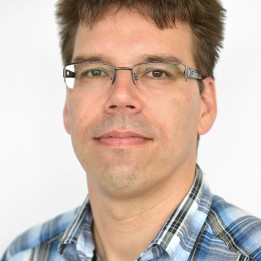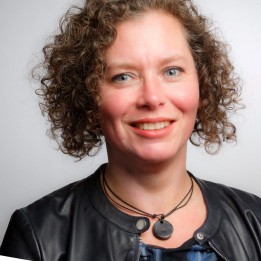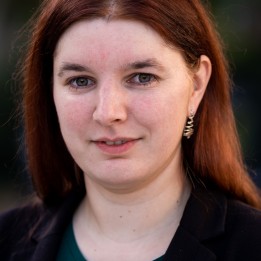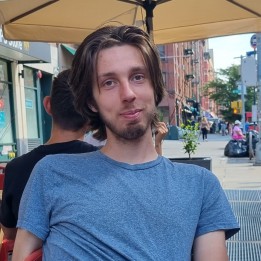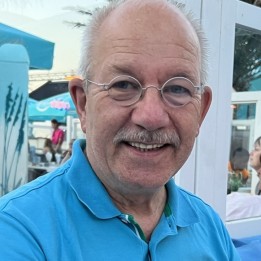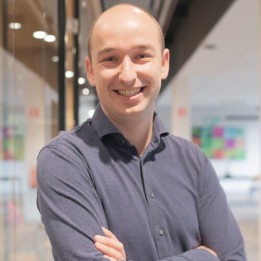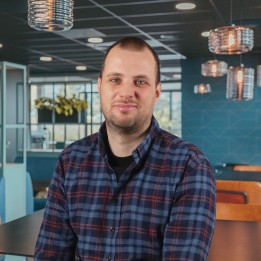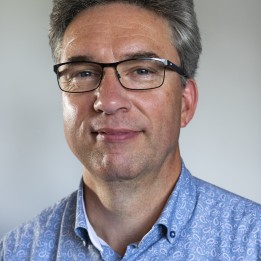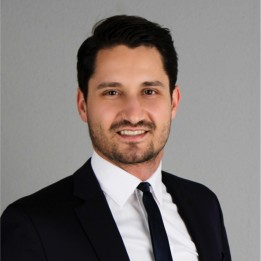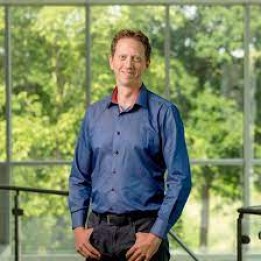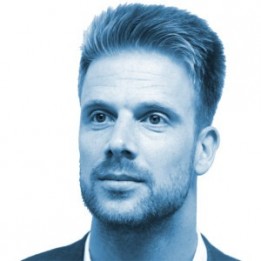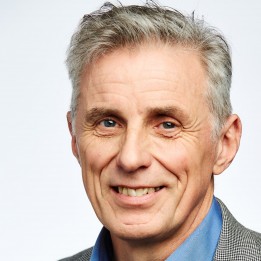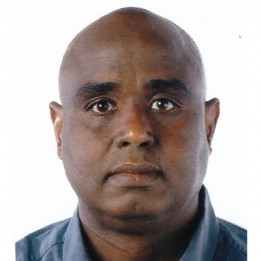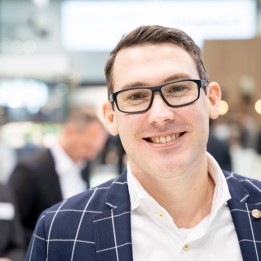Conference programme 15 November 2023
- 09:30-10:25
- Lectures hall 1
- Arena
Welcome with DJ
- 10:30-10:55
- Lectures hall 1
ultraTec deburring machines with robotic system for 24/7 workpiece loading
- Dieter Münz Directeur, ultraTec Innovation GmbH on behalf of Encoma BV
Hoe werkt het:
Een ultrasone sonotrode oscilleert in een speciaal waterbad en genereert golven en cavitatie. Deze verwijderen zeer betrouwbaar de kleine en grotere bramen met als eindresultaat zeer scherpe randen. Dit proces wordt ook gebruikt bij kleine gaatje en/of sleuven om de microbramen te verwijderen.
Sterke flexibiliteit:
Pick en place robot vergroot de onbemande ontbraammogelijkheden nog eens aanzienlijk. Scherpe randen zowel aan de binnen- als buitenzijde ongeacht de geometrieën worden probleemloos en snel verwijderd.
Topics:
Geen vervormingen van het onderdeel.
Geen verkleuring van het oppervlak.
Onbemand proces
Onderdelen worden tevens gereinigd
Onderdelen vanaf 1x1x1mm worden ontbraamd
Zeer innovatief proces.
- 10:55-11:20
- Lectures hall 1
Break & expo
- 11:20-11:45
- Lectures hall 1
Highlights VDMA study on the European semiconductor market & business climate outlook VDMA EMINT
- Dr. Theresa Spaan-Burke Innovation Director at IBS Precision Engineering, member of VDMA EMINT, VDMA EMINT (Electronics, Micro and New Energy Production Technologies)
Semiconductors play a key role for industrial products. Europe therefore has chip production in its strategic focus. A VDMA study shows that this presents both opportunities and challenges for the mechanical engineering sector.
Business Climate Survey results of the VDMA EMINT (Electronics, Micro and New Energy Production Technologies) Trade Association.
- 11:50-12:15
- Lectures hall 1
Pragmatic Digital Transformation of Precision Machines
- Mauro Fusco MSc Senior Application Engineer, The MathWorks B.V.
From food packaging to metal cutting, precision machinery and equipment are becoming more complex. As the engineering processes become more elaborate and require more time and effort, an increasing number of teams turn to modeling and simulation, advanced control strategies, and AI. This lecture will demonstrate the digitalization of engineering projects and examples of how working with MATLAB® and Simulink® creates a digital thread based on the systematic use of models throughout the lifecycle of a system, from concept to operation.
- 12:15-13:30
- Lectures hall 1
Break & expo
- 13:30-13:55
- Lectures hall 1
Ion Beam Facility: unveiling the power of Ion Beam Analysis and Ion Irradiation for industry advancements
- Dr. Beata Tyburska-Pueschel Senior Scientist, DIFFER
Many high end applications like EUV machine or Big Science equipment, require materials which can sustain harsh environment. The Ion Beam Facility (IBF) in Eindhoven offers companies a unique way to understand and test materials for high-end applications. Discover the IBF, the only Dutch accelerator lab specializing in Ion Beam Analysis (IBA) and ion irradiation. Explore practical applications through real-world case studies, including elemental analysis of fusion materials, photochromic effects, and DNA modification. See how IBF contributes to the development of cutting-edge technologies such as EUV mirrors. Get a glimpse of upcoming equipment for molten salt reactor material testing and in-operando IBA during electrolysis. Learn about the physics of IBA and its versatility as a proxy for neutron, proton, and gamma-ray irradiation, and what it can mean for your application.
- 14:00-14:25
- Lectures hall 1
ITER Project: F4E forthcoming needs with special materials
- Mehdi Daval Market Analysis Officer, F4E
The presentation will introduce the status of the ITER facility and the role of F4E.
Challenges on the area of materials and material handling will be presented.
The presentation will end with coming F4E tenders relevant for the attendants of this fair.
- 14:30-14:55
- Lectures hall 1
Material research @ HFML-FELIX
- Peter Christianen Professor, HFML-FELIX, Radboud University
An overview will be given of the material research at HFML-FELIX, an international research infrastructure, leading in science and technology with high magnetic fields and infrared/THz free electron laser radiation. On the one hand, novel materials, such as strong electrical conductors and superconductors, are required to push the boundaries of the advanced instrumentation using the highest magnetic fields and the most intense free electron laser pulses. On the other hand, studying matter under extreme conditions enables materials to be probed with unprecedented precision, potentially revealing new functionalities that pave the way for innovative applications in health and energy.
- 15:00-15:25
- Lectures hall 1
PLATO, determine the material planets are made of!
- Gabby Aitink-Kroes
- Ing. Gabby Aitink-Kroes Senior apto-mechanical design engineer, SRON
PLATO or the PLAnetary Transits and Oscillations will search for planets around stars spread over half of the sky by searching for tiny dips in intensity (~0.01%) which would reveal a planet passing in front. An array of 26 (overlapping) wide field camera’s will perform long, high-precision observations of large pieces of the sky.
Before launch each camera needs to be fully qualified and characterized in a similar environment as “in flight”. SRON performs the pre-flight Thermal and Vacuum (TV) testing for 1/3 of the cameras in a dedicated built test facility.
- 15:30-15:55
- Lectures hall 1
Mirrors for the Einstein Telescope
- Dr. Jessica Steinlechner Associate Professor, Maastricht University
Gravitational waves are an exciting tool to observe the Universe, including obtaining information about objects which otherwise appear ‘dark’, such as black holes. Large-scale, highly-reflective mirrors with sub-ppm optical absorption are key components of interferometric gravitational-wave detectors. However, their coating thermal noise limits the detectors’ sensitivity. Coating thermal noise reduction is the main motivation for operating future detectors, such as parts of the Einstein Telescope, at cryogenic temperatures. However, cryogenics alone do not solve the problem. This presentation will give an overview of the requirements, challenges and status of coating development for the Einstein Telescope.
- 16:00-16:25
- Lectures hall 1
Einstein Telescope; challenges in seismic isolation and vacuum
- Mathijs Baars Mechanical Engineer, Nikhef
Building a measuring device that can measure a length deviation of 10-22 m (radius of a proton) over a total length of 10 km is not trivial. The technology required to do this involves among others; a multi-stage seismic isolation system to dampen the noise that propagates through the ground; an ultra high vacuum in what might well prove to be the largest vacuum vessel in the world; and a cryogenics system for cooling the mirrors to around 10 K, without disturbing their isolation from the ground-noise. The measuring device in question of course being the Einstein Telescope.
- 17:00-19:00
- Lectures hall 1
Exhibitor drinks
- 09:30-10:25
- Lectures hall 1
- Arena
Welcome with DJ
- 10:30-10:55
- Lectures hall 3
Applications for active cooling, a summary of 5 applications
- Uwe Richter Territory Sales Manager, Laird Thermal Systems on behalf of Telerex
5 Applications explained "to the bone".
- 10:55-11:20
- Lectures hall 1
Break & expo
- 11:20-11:45
- Lectures hall 3
Metaalbewerkingsvloeistoffen, managing de transitie naar duurzaamheid
- Rob Pellikaan Global Market Manager General Machining, Carl Bechem GmbH
Begin 2023 publiceerde de Europese commissie het EU-overgangstraject tot 2050 voor de chemische industrie. Wat betekent dit voor metaalbewerkingsvloeistoffen en hoe vinden we de balans tussen economische duurzaamheid en ecologische duurzaamheid.
- 11:50-12:15
- Lectures hall 3
Winst door modulair ontwerpen, procesoptimalisatie en verschuiving klantenorderontkoppelpunt (KOOP)
- Hessel Visser Partner in improvement, Hessel Visser BV
Hessel Visser heeft 50 jaar ervaring in logistiek en supply chain management. Hij is een expert in optimalisatie van hightech productiefaciliteiten. Zijn focus ligt op klantgericht werken en doorlooptijdverkorting. Via DFA en modulaire aanpakken realiseert hij efficiënte productielijnen, minimaliseert tussenvoorraden en reduceert kosten. Zijn projectervaring strekt zich uit van ASML tot SEW Eurodrive. Hij heeft duizenden studenten opgeleid in het hoger en wetenschappelijk onderwijs. Tijdens zijn presentatie deelt Hessel zijn methodiek en successen, illustrerend hoe zijn holistische benadering bijdraagt aan innovatie en optimalisatie in hightech productieprocessen.
- 12:15-13:30
- Lectures hall 1
Break & expo
- 13:30-13:55
- Lectures hall 3
Creating a paradigm shift in energy transition with nanotechnology
- Berend van der Grinten Director Product Development, VSPARTICLE B.V.
- Pieter Poels Lead Engineer, MTA Group b.v.
VSP’s nanotechnology is creating new materials for the energy transition. Its unique technology enables to locally print inorganic nanostructured materials with unique properties.
Finding the right partner for their scale-up requirements resulted in a close co-operation with MTA.
MTA’s technology competencies and unique added value to combine product- and production development resulted in a full-fledged system with the required accuracy and reproducibility for series production. In this way, MTA contributed to a conclusive business case for VSP.
- 14:00-14:55
- Lectures hall 3
- Keynote
Opto-Mechanical applications in the machines of ASML
- Cor Ottens System Architect, ASML
Why is Opto-mechanics important for ASML.
More and smaller structures are needed in the chips to increase the calculation power and memory. The current possible linewidth is in the nanometer range.
In the Lithography machines of ASML a pattern on a reticle or mask is exposed on a wafer. The number of layers on a wafer is going up to 300. The optical alignment of the layers or patterns with respect to each other is very important to create vertical contacts. For example, at linewidths of 20nm the alignment error must be around 2 nm. The accuracy of the measurement and positioning system must be within this 2 nm.
Stability of the mechanics determines the major part of the accuracy especially thermal drift is the biggest contributor.
To reach the tight stability specifications the correct mechanical constructions must be applied that keeps the optical elements in position even under extreme influences of temperature, vibrations, forces and stress.
This presentation gives insight in the optomechanical design principles that are used in the machines of ASML to make the high accuracies possible.
- 15:00-15:25
- Lectures hall 3
A new dimension of laser drilling - Powerful USP lasers and innovative optics and process control enable micrometer drilling with aspect ratios of 1:40 and more.
- B. Eng. Michael Prasser GFH GmbH
Holes with high aspect ratios are still a challenge, especially for small hole diameters below 250 µm. Therefore, promising applications have not yet been realized. GFH GmbH, manufacturer of high precision laser processing machines from Deggendorf, now offers a solution for this. GFH GmbH has developed an innovative drilling process using high-power USP lasers that have recently become available and combines them with innovative drilling optics and a great deal of knowledge and experience in the production of precision boreholes in the micrometer range. And all of this is wear-free and a variety of materials can be processed.
- 15:30-15:55
- Lectures hall 3
Identifying Frequency Response Functions: A Fast and Accurate Approach that Enables Measuring Above the Nyquist Frequency
- Max van Haren PhD. Candidate, Eindhoven University of Technology
Precision mechatronic systems are challenging to identify, since they typically have complex dynamics and multiple inputs and outputs. In addition, sampling effects, such as aliasing, increase the complexity of identification, and is for instance seen in vision-in-the-loop systems. In this talk, a new identification technique that utilizes local models is discussed, that enables fast and accurate identification of complex multi-input multi-output systems, including identification above the Nyquist frequency. Results confirm a significant improvement with respect to traditional frequency response function identification using noise excitation.
- 16:00-17:00
- Lectures hall 3
- Arena
Networking drinks
- 17:00-19:00
- Lectures hall 1
Exhibitor drinks
- 09:30-10:25
- Lectures hall 1
- Arena
Welcome with DJ
- 10:30-10:55
- Arena
Presentatie magazine PIT; special over sleuteltechnologie (door SIA)
Claudia Reiner (bestuurslid Regieorgaan SIA) zal het exemplaar overhandigen aan Marc Hendrikse (boegbeeld topsector HTSM en voorzitter Holland High Tech).
Moderator: Erik Knol (Regieorgaan SIA)
- 11:00-13:30
- Arena
Business News Radio - Live radio broadcast from Hall 2
- 13:30-14:25
- Arena
Pitches Young Talent
- Team Polar TU Eindhoven
- Stratos V TU Delft
- Formula Student Team Delft TU Delft
- Forze Hydrogen Racing Delft TU Delft
- Project MARCH TU Delft
- Electric Superbike Twente University of Twente
- Lorentz Engineering Lorentz Casimir Lyceum
- University Racing Eindhoven TU Eindhoven
TU Eindhoven: Team Polar
Pioneering a zero emission Antarctica
Team Polar is developing the first of its kind, sustainable and autonomous research vehicle for Antarctica. We do this because now more than ever, climate research in Antarctica is essential for our future understanding of weather patterns. We are content on changing the status quo because research is currently being conducted with fossil fuel powered trucks, at risk of researchers lives. Therefore we remove the human risk by integrating sensors to detect obstacles and dangers in the ice.
TU Delft: Stratos V
TU Delft studententeam “Stratos V”
Stratos V is het eerste studententeam ter wereld die een bi-propellant raket motor heeft ontwikkeld, en we zijn het eerste team wat een herbruikbare raket ontwikkeld. Dit doen we om duurzaamheid te promoten in de ruimtevaart.
TU Delft: Formula Student Team Delft
Formula Student Team Delft
Formula Student is among the world’s most prestigious and well established academic motorsport competitions, whose goal it is to produce highly skilled undergraduates with hands on expertise in engineering, organisational, and managerial roles through participation in an innovative year-long project. Student teams from all over the world design, build, and race a small-scale formula-style racing car. This presents the engineers with the chance to put theory into practice in a dynamic and competitive environment.
TU Delft: Forze Hydrogen Racing Delft
Forze Hydrogen Racing Delft
Forze Hydrogen Racing is een Nederlands studententeam uit Delft dat zich richt op het ontwerpen, produceren en racen van waterstofvoertuigen in de autosport.
Het team bestaat uit getalenteerde studenten en werkt samen met partners uit de industrie om innovatieve technologieën te ontwikkelen die waterstof als brandstof benutten.
Forze heeft 's werelds eerste waterstof elektrische raceauto gebouwd en doet inmiddels mee aan races tegen benzineauto´s.
Het doel van het project is om het gebruik van waterstof technologie in de wereld van motorsport te promoten.
TU Delft: Project MARCH
Exoskeleton of Project MARCH
The vision of Project MARCH is to improve the quality of life of people with a spinal cord injury, by pushing the boundaries of exoskeleton technology.
Project MARCH is a non-profit student team from Delft University of Technology, consisting of 27 students with various academic backgrounds. With our multidisciplinary team, we work together for a full-time year to build an innovative exoskeleton for people with a spinal cord injury. An exoskeleton is a robotic suit that takes over muscle and nerve functions, making it possible for someone with a spinal cord injury to stand up and walk again.
University of Twente: Electric Superbike Twente
Reshaping Electric Motor Racing: Superbike with Battery Swapping Technology
We are a student team from the University of Twente and we develop and race electric superbikes. The current generation of superbike aims to solve one of the biggest hurdles in electric motorsport: limited range. We have done this by developing the first electric motorcycle with a swappable battery pack, which means it can have a full charge after a quick pitstop. This also allows us to have a smaller battery pack, which results in a faster superbike. Students from various technical and non-technical sectors pause their studies to focus on this project for a full year.
Lorentz Casimir Lyceum: Lorentz Engineering
FIRST: For Inspiration and Recognition of Science and Technology
Lorentz Engineering is een team van 12 middelbare scholieren uit de bovenbouw dat meedoet aan de internationale ‘FIRST’ wedstrijden robotica. Het doel is het uitdragen van STEM (Science, Technology, Engineering, Mathematics) door middel van een zelfgebouwde robot. Wereldwijd doen ruim 7000 teams mee, waarvan zeventig in Nederland. Vorig jaar hebben wij de Benelux finale gewonnen en zijn met het hele team met onze robot naar de wereldkampioenschappen in Houston geweest. Met de opgedane kennis proberen we meer kinderen, scholen en bedrijven enthousiast te maken voor techniek, en samenwerking tussen deze groepen te bevorderen.
TU Eindhoven: University Racing Eindhoven
University Racing Eindhoven
University Racing Eindhoven is een raceteam van 82 personen dat al 20 jaar wordt geleid door studenten en deelneemt aan de Formula Student-competitie tegen 700 andere teams van topuniversiteiten wereldwijd. Onze ambitie is om de ingenieurs van de toekomst op te leiden, terwijl we streven naar het winnen van de grootste Engineering Design-competitie ter wereld. Om dit te bereiken, ontwerpen en produceren we een raceauto in-house op de TU/e-campus. Binnen deze competitie, Formula Student, nemen we deel aan de elektrische (EV) en zelfrijdende (DV) klassen.
- 14:30-15:25
- Arena
New opportunities to innovate with a unique and versatile technology: Photonics
- Marc van Dijk Demcon
- Matthijs de Wit Te Lintelo Systems
- Bart Snijders TNO
- Sami Musa Chilas
- Petra Wicherink PhotonicsNL
Photonics? What is that and what should I do with it? Photonics is the generation, detection, and manipulation of light. Using this unknown technology can mean a lot for (new) developments or applications within your company. In this workshop, we will show you what and how you can use photonics. We take you from different angles to discover why photonics is important to you and how you can use it.
This workshop is offered by PhotonicsNL, with the deployment of experts in the applications of this technology.
Moderator: Petra Wicherink, PhotonicsNL
- 15:30-15:55
- Arena
Adaptive quality inspection of high-tech parts
- Johannes Mann Director Global Industry Processes, Hexagon
In today's manufacturing landscape, efficiency and precision are key to success. This presentation dives into the cutting-edge technology of high-speed optical non-tactile measuring and its symbiotic relationship with dynamic metrology. By leveraging advanced optical technologies, manufacturers can swiftly inspect high precision milling parts with unparalleled accuracy. Furthermore, the dynamic nature of this approach allows for intelligent inspection—when measurements showcase consistent quality, they are streamlined, enabling focus on features exhibiting higher variability. This not only guarantees consistent product quality but also significantly reduces inspection times for metrology and defect detection. Join us as we navigate these transformative techniques that are reshaping industry benchmarks for precision and efficiency.
- 16:00-16:30
- Arena
DSPE ceremony - Ir. A. Davidson Award
- 16:30-17:00
- Arena
Best Pitch Young Talent award
- 17:00-19:00
- Lectures hall 1






















